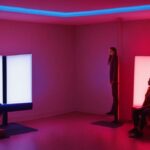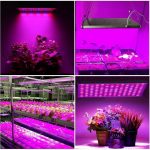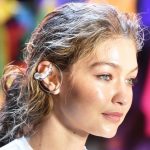Last Updated on 11 months by Francis
Light therapy is a relatively new method of treating Seasonal Affective Disorder (SAD), a type of depression that is caused by the change in seasons. This therapy involves exposing individuals to bright, artificial light for a certain amount of time each day to mimic natural sunlight. But how exactly does light therapy work to alleviate the symptoms of SAD? This topic delves into the science behind light therapy and how it can benefit those who experience seasonal depression.
Contents
The Science Behind Light Therapy
Light therapy is a non-invasive treatment that uses specific wavelengths of light to treat a variety of conditions, including seasonal affective disorder (SAD). SAD is a type of depression that typically occurs during the winter months when there is less natural sunlight. Light therapy can help alleviate the symptoms of SAD by providing a source of artificial light that mimics natural sunlight.
The Role of Melatonin
Melatonin is a hormone that is responsible for regulating the body’s sleep-wake cycle. When it gets dark outside, the body produces more melatonin, which makes us feel sleepy. When it gets light outside, the body produces less melatonin, which makes us feel more awake. People with SAD tend to produce more melatonin than usual, which can contribute to feelings of fatigue and depression.
How Light Therapy Affects Melatonin
Light therapy works by exposing the body to bright light, which can help regulate the production of melatonin. When the body is exposed to bright light, it produces less melatonin, which can help alleviate the symptoms of SAD. Light therapy can also help regulate the body’s circadian rhythm, which can improve sleep patterns and increase energy levels.
The Benefits of Light Therapy
Improves Mood
One of the primary benefits of light therapy for SAD is that it can improve mood. People with SAD tend to experience feelings of sadness, hopelessness, and irritability, which can make it difficult to enjoy life. Light therapy can help alleviate these symptoms by providing a source of artificial light that mimics natural sunlight.
Increases Energy Levels
Another benefit of light therapy is that it can increase energy levels. People with SAD tend to feel more tired than usual, which can make it difficult to get things done. Light therapy can help increase energy levels by regulating the body’s circadian rhythm, which can improve sleep patterns and increase alertness during the day.
Improves Sleep
Light therapy can also help improve sleep patterns. People with SAD tend to experience disrupted sleep, which can exacerbate feelings of fatigue and depression. Light therapy can help regulate the body’s circadian rhythm, which can improve sleep patterns and help people feel more rested.
How to Use Light Therapy
Choosing a Light Box
When using light therapy for SAD, it’s important to choose the right light box. Light boxes come in a variety of shapes and sizes, and they emit different levels of light. It’s important to choose a light box that emits at least 10,000 lux of light, which is the recommended level for treating SAD.
Using the Light Box
To use a light box, sit in front of it for 30 minutes to 2 hours per day, depending on the strength of the light box. It’s important to position the light box at the correct distance and angle to ensure that the light reaches the eyes. It’s also important to use the light box at the same time every day to regulate the body’s circadian rhythm.
Side Effects
Light therapy is generally safe and well-tolerated, but it can cause side effects in some people. These side effects can include headaches, eyestrain, and nausea. It’s important to talk to a healthcare provider before starting light therapy to ensure that it’s safe for you.
The Role of Serotonin
Serotonin is a neurotransmitter that is responsible for regulating mood, appetite, and sleep. People with SAD tend to have lower levels of serotonin, which can contribute to feelings of depression and irritability. Light therapy can help increase the production of serotonin, which can improve mood and reduce symptoms of SAD.
May Be Effective for Other Conditions
While light therapy is primarily used to treat SAD, it may also be effective for other conditions. For example, it may be used to treat non-seasonal depression, sleep disorders, and jet lag.
FAQs for How Does Light Therapy for SAD Work?
What is SAD?
SAD or Seasonal Affective Disorder is a type of depression that affects people during specific times of the year, usually during winters. It is caused due to a lack of natural sunlight, which affects the body’s hormonal balance and disrupts the biological clock.
How does light therapy treat SAD?
Light therapy is a treatment that uses artificial light to mimic the natural sunlight that the body requires. The device emits bright light that is usually 10,000 lux or more, and the person is exposed to it for around 30 minutes to an hour, usually in the morning. This exposure to bright light helps regulate the body’s hormonal balance and, in turn, alleviate the symptoms of SAD.
How effective is light therapy for treating SAD?
Light therapy has been found to be highly effective in treating SAD, with around 70% of people experiencing significant improvements in their symptoms within a few weeks of starting the treatment. However, it may take a few days or even a few weeks for some people to respond to the treatment.
Are there any side effects of light therapy?
Light therapy is generally considered safe and has no significant side effects. However, some people may experience headaches, eye strain, or nausea after the first few sessions. To avoid these side effects, it is recommended to start with a lower light intensity and gradually increase it over time.
Is light therapy the only treatment for SAD?
Light therapy is one of the primary treatments for SAD, but it is not the only one. Other treatments include psychotherapy, medication, and lifestyle changes such as regular exercise and a healthy diet. It is generally recommended to use a combination of these treatments for the best results.
Can I do light therapy at home?
Yes, light therapy can be done at home, and there are various devices available in the market for this purpose. However, it is recommended to consult with a healthcare professional before starting the treatment and to ensure that the device being used is safe and effective for treating SAD.


.jpg)




